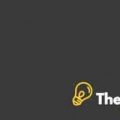
Heineken Case Analysis
Introduction:
The beer industry in the United States is known to be a major part of the country’s economy. The industry contributes millions of dollars and helps in increasing revenues in term of taxes and wages. The market for beer accounts for 50% in terms of total volumeof the total alcohol in the United States. The company was established in 1863 and became a world’s largest beer company by selling nearly 116.8 million barrels of beer. The prime reason for the company’s growth is its expansion in the international market. The company is heavily engaged in making its expansion to achieve overall growth in an international market. The company has successfully built large brands and productively achieve more than 170 regional, local and international and premium beer awards worldwide.
Problem Statement:
The basic problem faced by the company was related to declining market share in leading beer brands, the company is working hard to bring awareness about the brand internationally. Furthermore, the company is also facing problems with respect to its advertising on a global basis. Other than that, the company is at its maturity stage and moving towards declining phase as the competition, specifically global competition, has become tougher. Furthermore, the company is also facing issues related to culture whilst marketing on a global level.
International Operations of Heineken:
The company is a global giant and physically present in more than 170 countries in the world. The company has more than eighty brands. Imports in the United States include Lager, Amstel light, Special Dark and Buckler. In addition to that, the company has nearly more than 110 breweries in more than 50 states in the world and is engaged in exporting in almost all parts of the world. By the end of 1999, the company ranked inthe second number in terms of the total beer volume that was 91 millionhectoliters. The products of the company are always brewed in Holland and imported to the United States.
How would you characterize the pressures for customization and global integration in Heineken’s industry?
Customization is a process through which companies are engaged in delivering products and services after modifying it according to the market and customer needs and wants. The company is facing pressure from all over the world with respect to customization in the industry. In addition to that, it is aggressively engaged in the process of consolidation. Consolidation was based on mergers and acquisitions all around the world. Because of various mergers and acquisitions, the company went through with momentous changes in previous years. To become a major player in the global market, many companies including Heineken engaged in acquiring or merging with their competitors.
For more than six years in the past, U.S based Miller Brewing company was acquired by South African company. By the end of 2004, AmBev, a Brazilian company merged with Interbrew that is a Belgium brewing company. In addition to that, there were other companies as well who were using various strategies other than mergers and acquisitions to tap into thenew markets worldwide. Companies like Anheuser Bush expand itself through buying equity stakes. Along with that, the company strike by making partnerships with a Mexican company named as Grupo Molido. With the help of these mergers and partnerships, the company would successfully build their positive brand image and reputation across the world.
Furthermore, it gives them possession of local brands that are driving them to get a major position in the beer market globally. By using the global integration strategy, companies are achieving distribution and manufacturing capabilities that in turn aid them to use their brands worldwide.
Customization and global integration arenegatively related to eachother as customization is a process of inventing a new product according to the needs of a new market. On the other hand, global integration is based on globalization that is keeping the products and advertising message the same. Heineken can do customization on a local level and go for standardization when going global.
The company can go toa certain route in order to make the brand recognized worldwide. First, the company needs to make a strategic plan for itsbrands, according to the market i.e. local versus global. After that, the management of the company needs to make themselves engaged in the process of negotiations to build agreements with the partners from all over the world. In addition to that, the company can go for media buys as a part of the company’s long-term brand strategic planning. For global integration, the company can go for agency resources with respect to the development of the company.
In addition to that, the company can make benefits from customization through increasing traffic and as a result, decrease costs and increase profits as well. With the help of customization, companies can go for differentiation...............
This is just a sample partial case solution. Please place the order on the website to order your own originally done case solution.













